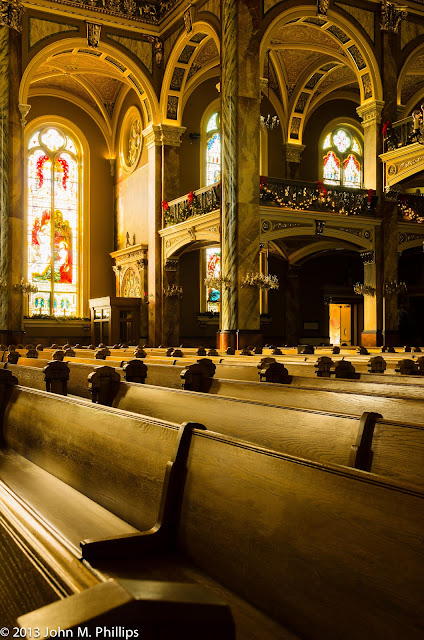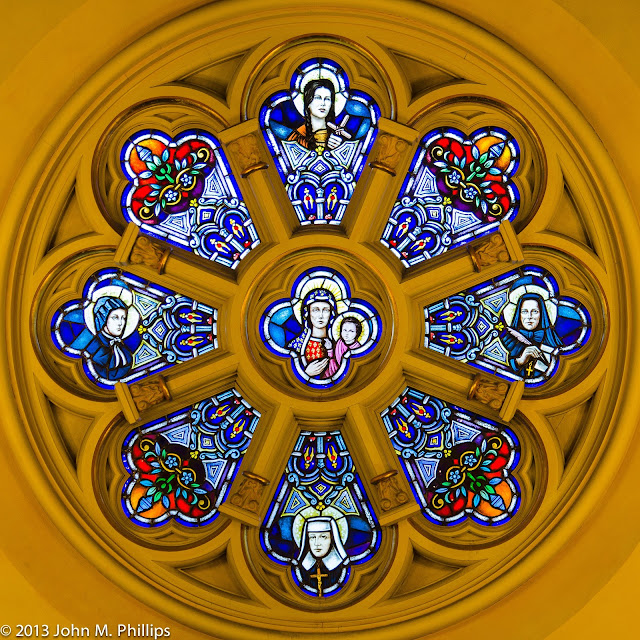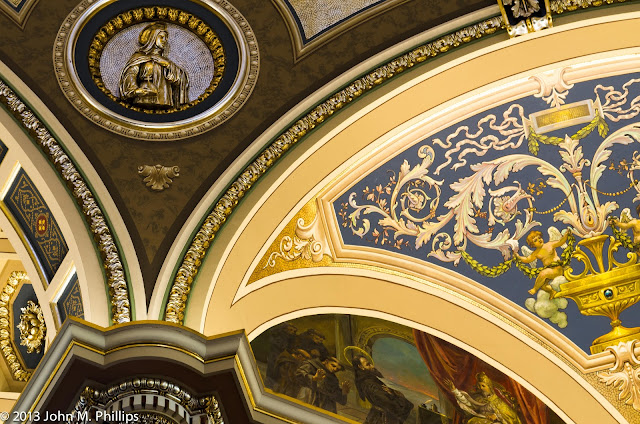I spent perhaps two hours taking photos this time and, interestingly, there were fewer than half a dozen other people in this large church during the time I was there. And no one questioned my taking photos, including the use of a tripod. They must just have assumed that I was authorized to do so or else they are just accustomed to having photographers coming to take pictures.
OK, so one of the great aspects of this basilica is it's dome. Here is another shot of the interior of the dome. I still wish I had more wide-angle capability.
Reminds me of the old TV test patterns from the early 1950s.
And here are some wide-angle shots (as wide-angle as my lenses permit, anyway) of the general interior.
Although the above images are not symmetrical, I still keep finding myself making sure that many of my shots take advantage of the building's symmetry, as in the following shots of the ceiling above the sanctuary.
And here are a couple of shots that feature portions of the dome as well as other portions of the ceiling.
I took this last shot in a foyer area where the interior lighting was much stronger.
On this visit I tried to pay more attention to the vaulting between the support columns and the ceiling. Here are a few of those shots.
I particularly liked this last shot because of the lines curving from the column to the upper right hand and lower right hand corners of the image.
Finally, as a technical point, I took a few high dynamic range (HDR) shots. This requires taking multiple shots of the exact same scene but at different exposure times and then using post-processing software to blend the images together. A typical arrangement would be to take one shot at a normal exposure, one significantly overexposed (say, 4 times the exposure time), and one significantly underexposed (say 1/4th exposure time). I thought I would show how one of these turned out.
First, here is the shot taken at normal exposure.
And here is the shot in HDR.
I was impressed by how much more the HDR photo "pops," hopefully, without being garish.















What eautiful pictures and you sure have a talent in capturing the beauty
ReplyDelete